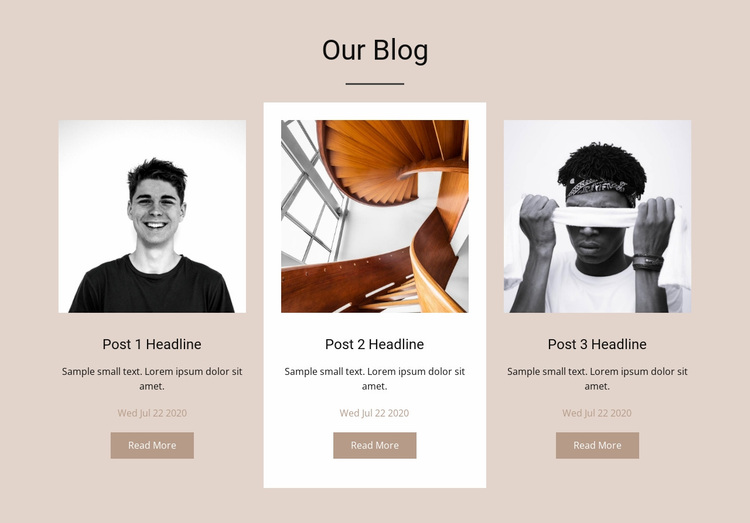Creative Website Design with Focus on User Engagement
Creative Website Design with Focus on User Engagement
Blog Article
Leading Tips for Creating an Impactful Internet Site Design That Transforms
To achieve this, one must think about a range of aspects, consisting of understanding the target audience, focusing on user experience, and enhancing for mobile platforms. The strategic use of compelling call-to-actions and a well-defined visual hierarchy plays a crucial duty in leading customers via their trip.

Understand Your Target Target Market
Understanding your target audience is essential to efficient internet site layout, as it prepares for creating an appealing individual experience. Determining that your customers are, including their demographics, choices, and actions, makes it possible for developers to customize the website's content, layout, and functionality to meet particular requirements.
Carrying out complete marketing research is critical in this procedure. Studies, meetings, and analytics can give beneficial understandings right into individual assumptions and pain points. By compiling this data, developers can develop customer characters that stand for various sections of the audience, ensuring that design choices are educated and pertinent.
Moreover, comprehending the target audience helps in selecting ideal layout aspects such as color design, typography, and images that reverberate with individuals. A site that speaks straight to its target market promotes a sense of link and depend on, motivating longer gos to and higher conversion prices.
Eventually, a user-centered method to website layout not only enhances customer fulfillment but also sustains company objectives by driving involvement and loyalty. By focusing on the requirements and choices of the target market, a website can successfully serve its purpose and accomplish preferred outcomes.
Prioritize Customer Experience
To improve the overall performance of a site, prioritizing individual experience (UX) is important (Website Design). A properly designed UX makes sure that visitors can browse the site easily, find info quickly, and involve with material meaningfully. This brings about raised user contentment and higher conversion prices
Begin by implementing instinctive navigation. Menus must be logically structured, enabling users to find vital areas of the website with marginal effort. Uniformity in layout aspects, such as color pattern and font styles, fosters familiarity, which is crucial for keeping individual engagement.
In addition, take into consideration the packing rate of your website. A delay of simply a couple of seconds can result in substantial drop-offs, as users are less likely to await a slow-loading web page. Streamlining pictures and enhancing code can boost performance and keep visitors.
Furthermore, clearness in content presentation is important. Use concise, engaging language and break up text with visuals to improve readability. By focusing on customer experience, you not just develop a much more satisfying atmosphere for visitors however also strengthen your brand's credibility. Ultimately, a concentrate on UX is a financial investment in the lasting success of your web site.
Maximize for Mobile Tools
Enhancing for smart phones is essential in today's electronic landscape, where a raising variety of users access internet sites with mobile phones and tablet computers. A mobile-friendly design not only improves individual experience but additionally plays a considerable role in boosting internet search engine rankings. To attain this, it is crucial to embrace a responsive layout that automatically readjusts to different display dimensions and positionings.

Filling speed is another important element; mobile customers are usually much less individual and anticipate quick accessibility to info. Maximize pictures and utilize web browser caching to boost efficiency. Test your website on numerous devices and screen resolutions to recognize and correct any type of potential usability problems. By focusing on mobile optimization, you guarantee that your web site remains competitive and successfully involves a broader target market.
Use Compelling Call-to-Actions
A site's efficiency commonly rests on its capacity to direct site visitors toward wanted actions, making engaging call-to-actions (CTAs) vital components of style. CTAs offer as the crucial factors that route customers to involve with the website, whether that suggests making an acquisition, signing up for a newsletter, or downloading a source.
To produce navigate to this site reliable CTAs, quality is critical. Use concise language that plainly interacts the action you want the customer to take.
In addition, the layout of CTAs must stand out without being noticeable. Utilize contrasting colors and clear fonts to ensure they capture interest. Furthermore, think about using directional signs, such as arrows or images, to lead individuals toward these switches. By concentrating on these elements, organizations can substantially enhance customer interaction, driving conversions and ultimately attaining their web site's goals.
Concentrate On Visual Hierarchy
Reliable site layout relies greatly on a well-structured aesthetic pecking order that overviews users with content effortlessly. By arranging browse this site components in a way that prioritizes information, designers can boost user experience and help with decision-making. This entails utilizing dimension, shade, comparison, and spacing tactically to draw focus to one of the most vital parts of a web page.
The use of bigger font styles for headings and subheadings develops a clear distinction between various areas, allowing users to scan material easily. Additionally, utilizing different shades for buttons and calls-to-action can catch customer attention and motivate communication. Whitespace is an additional important element; it stops mess and enables users to focus on crucial messages without disturbances.
Photos and graphics should complement the text while also adhering to the well established power structure, enhancing the total message (Website Design). Uniformity in design elements, such as color pattern and typography, further enhances the visual power structure, making navigation user-friendly

Final Thought
In final thought, effective site style requires a thorough understanding of the target market, prioritization of customer experience, and mobile optimization. The strategic use compelling call-to-actions and a well-defined visual hierarchy further enhances customer involvement. By implementing these concepts, internet sites can attain greater conversion prices, making certain that design aspects not only attract visitors yet additionally promote smooth navigation and interaction. Inevitably, a well-executed web site style works as a vital component in driving user activities and attaining service goals.
Report this page